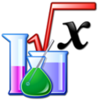Constructivism is basically a theory -- based on observation and scientific study -- about how people learn. It says that people construct their own understanding and knowledge of the world, through experiencing things and reflecting on those experiences. When we encounter something new, we have to reconcile it with our previous ideas and experience, maybe changing what we believe, or maybe discarding the new information as irrelevant. In any case, we are active creators of our own knowledge. To do this, we must ask questions, explore, and assess what we know.
In the classroom, the constructivist view of learning can point towards a number of different teaching practices. In the most general sense, it usually means encouraging students to use active techniques (experiments, real-world problem solving) to create more knowledge and then to reflect on and talk about what they are doing and how their understanding is changing. The teacher makes sure she understands the students' preexisting conceptions, and guides the activity to address them and then build on them. (Read more here: http://www.thirteen.org/edonline/concept2class/constructivism/)
Definition
Constructivism is a philosophy of learning founded on the premise that, by reflecting on our experiences, we construct our own understanding of the world we live in. Each of us generates our own "rules" and "mental models," which we use to make sense of our experiences. Learning, therefore, is simply the process of adjusting our mental models to accommodate new experiences.
( Read more: http://www.pgce.soton.ac.uk/IT/Learning/MA(Ed)IPD/constructivism.htm)
Jonassen (1991) talks about constructivism as follows:
Constructivism, founded on Kantian beliefs, claims that reality is constructed by the knower based upon mental activity. Humans are perceivers and interpreters who construct their own reality through engaging in those mental activities...thinking is grounded in perception of physical and social experiences, which can only be comprehended by the mind. What the mind produces are mental models that explain to the knower what he or she has perceived.... We all conceive of the external reality somewhat differently, based on our unique set of experiences with the world and our beliefs about them. (p. 10)
Bednar, et al (1991) elaborate further:
...the learner is building an internal representation of knowledge, a personal interpretation of experience. This representation is constantly open to change, its structure and linkages forming the foundation to which other knowledge structures are appended. Learning is an active process in which meaning is developed on the basis of experience....Conceptual growth comes from the sharing of multiple perspectives and simultaneous changing of our internal representations in response to those perspectives as well as through cumulative experience.
Consistent with this view of knowledge, learning must be situated in a rich context, reflective of real world contexts, for this constructive process to occur and transfer to environments beyond the school (p. 91-2).
(http://www.usask.ca/education/coursework/802papers/Skaalid/definition.html)
A reaction to didactic approaches such as behaviorism and programmed instruction, constructivism states that learning is an active, contextualized process of constructing knowledge rather than acquiring it. Knowledge is constructed based on personal experiences and hypotheses of the environment. Learners continuously test these hypotheses through social negotiation. Each person has a different interpretation and construction of knowledge process. The learner is not a blank slate (tabula rasa) but brings past experiences and cultural factors to a situation.





